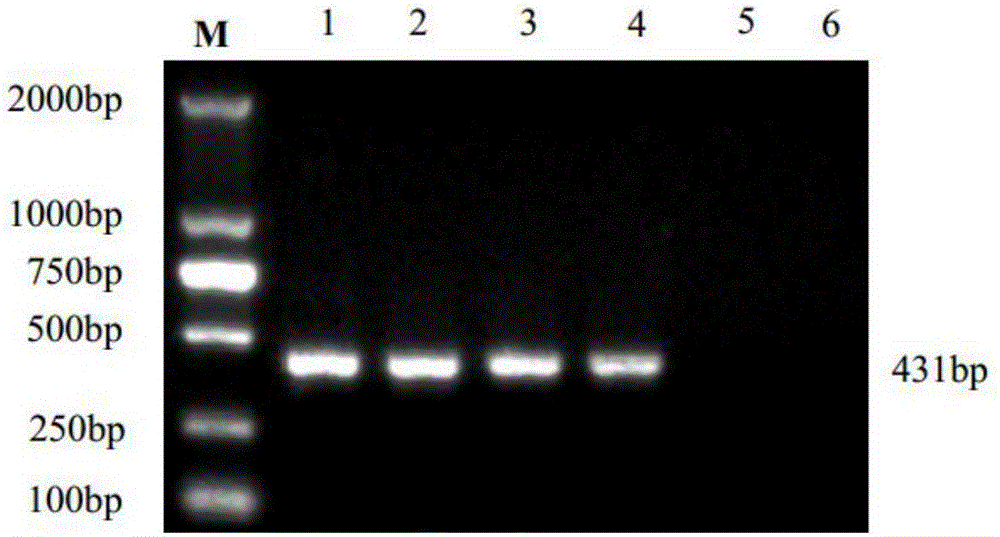Virus-elimination method of plant tissue cultured virus-free explant
A technology for plant tissue culture and explants, applied in the field of detoxification of plant tissue culture detoxification explants, can solve the problems of explant detoxification culture failure, etc., achieve simple operation of tissue culture detoxification, increase differentiation rate and The effect of high survival rate, differentiation rate and survival rate
- Summary
- Abstract
- Description
- Claims
- Application Information
AI Technical Summary
Problems solved by technology
Method used
Image
Examples
Embodiment 1
[0028] Choose the leaves of the dicotyledonous plant "Red Fuji" apple in the growth period as explants, wash them in running water, sterilize them in 30% garlic aqueous solution for 30 minutes, and then cut them into 1cm 2 The squares were immediately inoculated on the optimal primary medium (MS+2,4-D 1.0mg / L+3% sucrose+agar 8g / L). After the callus is induced, it is transferred to the most suitable subculture medium (2 / 3MS+6-BA0.6mg / L+IBA0.2mg / L+GA1.0+3% sucrose+8g / L agar) for cultivation, Proliferation and cultivation are carried out continuously, and when the subcultured rootless seedlings reach a large number, 50-100 mg of leaves are taken for detection of main viruses. The virus detected this time is one of the main viruses in apples, that is, apple chlorotic leaf spot virus (ACLSV), such as figure 1 There is no virus-specific fragment with a length of 358bp in the electrophoresis graph shown, that is, the test result is negative, and the subculture seedlings with a negat...
Embodiment 2
[0030] The phloem of the dicotyledonous plant "Red Fuji" apple in the dormant period was selected as explants, washed with running water, sterilized in 50% garlic aqueous solution for 30 minutes, and immediately inoculated in the optimal primary medium (MS+2,4-D1 .5mg / L+3% sucrose+agar 8g / L). After the callus is induced, it is transferred to the most suitable subculture medium (2 / 3MS+6-BA 0.6mg / L+IBA0.2mg / L+GA1.0+3% sucrose+8g / L agar) for cultivation, Proliferate and cultivate continuously, and when the subcultured rootless seedlings reach a large number, take 50-100 mg of leaves to detect the main virus ACLSV. The test result is then negative (i.e. electrophoresis figure 1 The progeny seedlings that do not have a length of 358bp virus-specific fragment) continue to be cultivated in the proliferation medium, and after reaching a certain number, they are transferred to a suitable rooting medium (1 / 2MS+IBA1.0mg / L+3 % sucrose+8g / L agar) to carry out rooting culture, transfer to...
Embodiment 3
[0032] Choose the leaves of the monocotyledon Phalaenopsis, rinse with running water, soak in 30% garlic solution for 30min, and then cut into 1cm 2 Immediately inoculated on the optimal primary medium (MS+2,4-D1.0mg / L+BA1.0mg / L+3% sucrose+agar 8g / L). After the callus is induced, it is transferred to the most suitable subculture medium (MS+6-BA 1.0mg / L+IBA0.2mg / L+3% sucrose+8g / L agar) for cultivation, and the proliferation culture is continuously carried out. When the subcultured rootless seedlings reach a large number, 50-100 mg of leaves are taken to detect the main virus. The virus detected this time is one of the main viruses of Phalaenopsis, namely Cymbidium mosaic virus (CyMV). The test result is then negative (i.e. electrophoresis figure 2 The progeny seedlings that do not have a length of 431bp virus-specific fragment) continue to be cultivated in the proliferation medium, and after reaching a certain number, they are transferred to a suitable rooting medium (1 / 2MS+...
PUM
 Login to View More
Login to View More Abstract
Description
Claims
Application Information
 Login to View More
Login to View More - R&D
- Intellectual Property
- Life Sciences
- Materials
- Tech Scout
- Unparalleled Data Quality
- Higher Quality Content
- 60% Fewer Hallucinations
Browse by: Latest US Patents, China's latest patents, Technical Efficacy Thesaurus, Application Domain, Technology Topic, Popular Technical Reports.
© 2025 PatSnap. All rights reserved.Legal|Privacy policy|Modern Slavery Act Transparency Statement|Sitemap|About US| Contact US: help@patsnap.com


